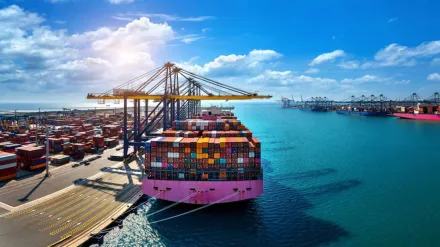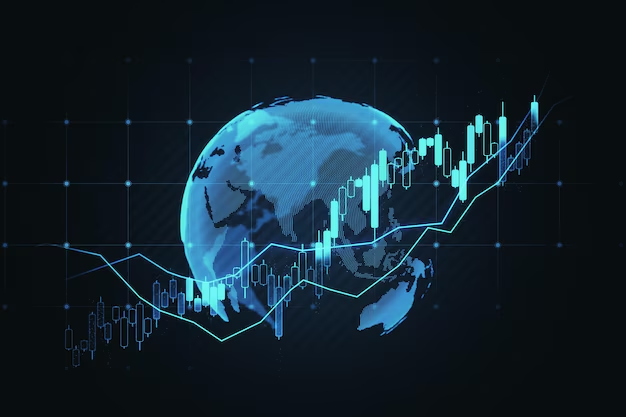Europe’s Energy Crisis: Natural Gas Price Effects on the Euro in 2025

Europe’s energy situation feels like a puzzle with pieces that keep shifting. Natural gas prices have taken center stage, doing more than just hiking utility bills or keeping factories running, they’re tugging at the euro’s value in ways that are hard to ignore. It’s April 2025, spring is creeping in, and it seems like a good time to dig into how this unpredictable fuel is messing with Europe’s money and what might come next.
Understanding Europe’s Energy Demand

Natural gas has always been a big deal here. It heats houses, powers plants, and fills gaps when wind turbines stall or the sun hides. But lately, it’s been anything but steady. Prices have jumped, crashed, and jumped again, caught up in a mess of world events, weather swings, and market chaos.
Think back to 2022. Russia’s move into Ukraine flipped everything upside down. Europe had been cozy with Russian gas, piped in through a web of lines stretching across the continent. Then sanctions hit, Nord Stream went dark, and supplies dried up. At the Dutch hub where prices get set, costs shot up to something crazy like €350 per megawatt-hour. People felt it at home, businesses scrambled, and governments started throwing money around to keep things from falling apart.
How far things have changed in 2025?
Now, in 2025, things have changed but not settled. Russian gas stopped flowing through Ukraine at the start of the year, which didn’t help. After a cold winter, storage tanks across Europe were sitting below 50% by February, lower than usual for that time. Prices climbed to €59 per megawatt-hour, the highest in two years. Lately, though, talk of Russian gas sneaking back through other routes and a warmer spring forecast have pulled prices down a bit. It’s a bumpy ride, and nobody’s sure where it’s headed.
What’s behind all this? Supply problems are part of it, pipelines shutting off or ships getting rerouted. But demand’s a player too. A freezing week or a dry spell knocking out hydropower means gas plants have to pick up the slack. Europe’s been forced to ditch Russian gas and chase LNG on the global market, elbowing Asia for every tanker. When one heads to Shanghai instead of Rotterdam, Europe’s left short, and prices tick up. It’s a scramble, and Europe’s not always winning.
How the Crisis is Hitting the Euro?

So, how’s the energy crisis hitting the euro? Money markets are twitchy, reacting to every jolt. When gas prices climb, it’s not just a headache for power companies, it ripples everywhere, and the euro takes a hit.
Take trade for starters. Europe buys most of its gas from outside, about 80%, and when prices spike, the bill gets ugly. Back in 2022, the EU coughed up over €650 billion to keep the lights on and businesses afloat. That’s a pile of cash heading out, usually in dollars, to places like the U.S. or Qatar. When more euros get swapped for foreign money, it drags the currency down. Some ECB folks reckon a steady gas price bump could knock a small chunk, say 0.2%, off eurozone GDP over a few years. Not a disaster, but enough to make the euro wobble.
Then there’s inflation. Gas isn’t just for heat, it’s baked into stuff like fertilizer and steel. When its price goes up, so does the cost of making things, and that lands on store shelves. Inflation took off in 2022, and even the slower-moving core rate, which skips energy and food, got dragged along. Some Italian bank studies say gas shocks hit harder than oil ones because it’s so tied to Europe’s industries. Higher prices squeeze wallets, and the ECB starts talking rate hikes. That might give the euro a quick lift, but if the economy slows, people stop betting on it.
It works the other way too. A weaker euro makes gas pricier since LNG deals are in dollars. If the euro’s down, each shipment costs more, which pushes gas prices higher, and round it goes. Early this year, with the euro close to matching the dollar, it’s been a worry keeping officials up at night.
Weather’s a wild card in all this. Winters can be brutal or mild, and they call the shots. Last year’s cold snapped through storage fast, and a dry summer left hydropower weak, so gas had to step up. Spring 2025 looks softer, which could cool things off demand-wise. But the weather's tricky these days, and the climate's all over the place. A cold snap or hot streak could change everything quickly.
Then there’s the global mess. Russia and Ukraine are still at it, and losing that gas route through Ukraine hurts, especially for countries like Hungary and Slovakia, where it was 65% of their supply a couple years back. Other pipelines can’t cover it all. Trouble in the Middle East, where LNG comes from, could choke things too. If that flares up, prices jump. Some Goldman Sachs folks think getting Russian gas back to normal could slash prices by half next year, but that’s a pipe dream with things as they are.
Green energy’s in the mix too. Europe’s been piling on wind and solar, 50 gigawatts in 2022 alone, which cuts into gas use. But when the wind dies or clouds roll in, gas plants fire up. France’s nuclear headaches and dried-up dams don’t help. Going green’s a slow haul, and gas is still the backup plan.
Wrapping up
Over in the U.S., any shift in energy policy could shake things up. If they tighten the taps, prices might climb, and the euro feels it. Asia’s a factor too, China’s gobbling LNG, keeping the market tight. If they ease off, it might free some up, or not. The euro’s riding on how Europe handles this global tug-of-war. A strong dollar, backed by U.S. energy muscle, tends to outshine the eurozone. Still, locking in suppliers like Norway or Algeria, or even patching things up with Russia, could take some weight off.




